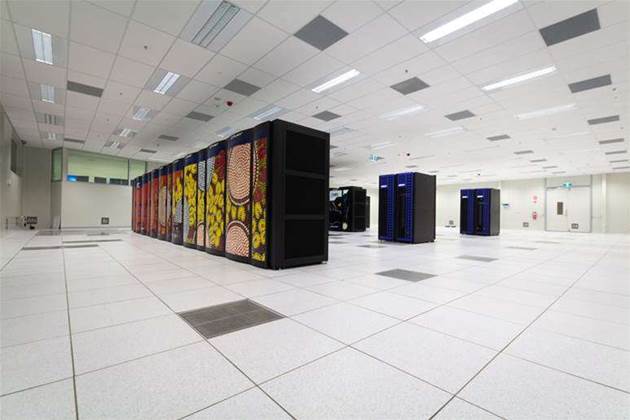The operators of one of the fastest supercomputers in the southern hemisphere, iVec’s 35,000 core Magnus, have commemorated its first months in operation by offering a select group of Australian-based researchers an unprecedented level of computing power.
The Pawsey Centre has chosen 14 projects, dubbed ‘Petascale Pioneers’, that will each have access to roughly 10 million CPU hours’ worth of Magnus-based processing, rather than the 500,000 CPU hour blocks it usually deals out.
The group’s deputy executive director, Dr George Beckett, said the scheme was in part a promotional exercise to show off the capabilities of Australia’s newest supercomputer, and partly a challenge to the country’s scientists to attempt research that has not previously been possible.
He said Magnus’ parallel operating machines shifted their focus to capacity for one job rather than running multiple jobs concurrently.
“We can do one calculation across the whole machine. This is different to how cluster-based machines work," he said.
“On these machines researchers can do, say, 35,000 calculations concurrently. What we are aiming to do is one calculation at a time but one that is 35,000 times more challenging.”
The completion of the second stage of the Magnus upgrade this month has allowed the supercomputer to cross the PetaFLOP threshold, but the iVec team is remaining tight-lipped on the actual performance figures for the time being.
“I know what the numbers are and I believe it is the largest and most powerful machine in the southern hemisphere," Beckett said.
Its number one rival in the power stakes is the National Computing Infrastructure’s Canberra based Raijin machine, which has been clocked at 1.112 petaFLOPs at its peak, indicating that the figure is somewhere beyond this.
“Magnus is step change for Australian research,” said Beckett. “We want to upscale people’s ambitions. Magnus allows scientists to do things they have never been able to do before.”
Some of the ‘Petascale Pioneer’ programs underway include:
- Detailed simulation of the effects of extreme weather events by Murdoch University researchers. The added computing power of Magnus has allowed the Murdoch team to narrow down the scale of their analysis from 20km to 5km blocks. The new level of detail will allow them to look into effects previously hidden to them using iVec’s older EPIC machine. They will now be able to model rain falling under the Darling escarpment, and effects on localised patches of vegetation of WA’s southern coastline.
- Mapping the variety of genomes of the white fly, which pose a huge threat to crops. University of Western Australia researchers want to uncover the genetic difference between white flies that cause devastating agricultural damage and those that cause little harm at all. Previously, mapping just one genome would take them 2-3 weeks, placing the prospect of comparing large numbers out of the realms of possibility until Magnus came along.
- Modelling the most efficient gas turbine. In the past researchers have been forced to apply simplifications to the simulated composition of turbines and discard some of the finer details of the reactions that take place inside them because of the computing limits at hand. Beckett says the Petascale pioneer scheme aims to get rid of these sorts of compromises. “Assumptions reduce the accuracy of the calculations. With Magnus the researchers can introduce a new level physics into the simulation.”
Whether or not the Pawsey Centre runs the program again next year is yet to be decided. The window of opportunity was “a fortuitous coming about” explained Beckett, created by the misalignment of the normal grants calendar and the go-live date of Magnus.
“Magnus was switched on in August which didn’t sit naturally with our 12 month scheme.
“We wanted to make sure the machine was not sitting idle for the first months so instead we decided to give a small number of projects a lot of computing power,” he said.
“Depending on the success of the studies it may be something that we do again.”







_(20).jpg&h=140&w=231&c=1&s=0)


_(22).jpg&h=140&w=231&c=1&s=0)



_(26).jpg&w=100&c=1&s=0)

 iTnews Executive Retreat - Security Leaders Edition
iTnews Executive Retreat - Security Leaders Edition












_(1).jpg&h=140&w=231&c=1&s=0)



